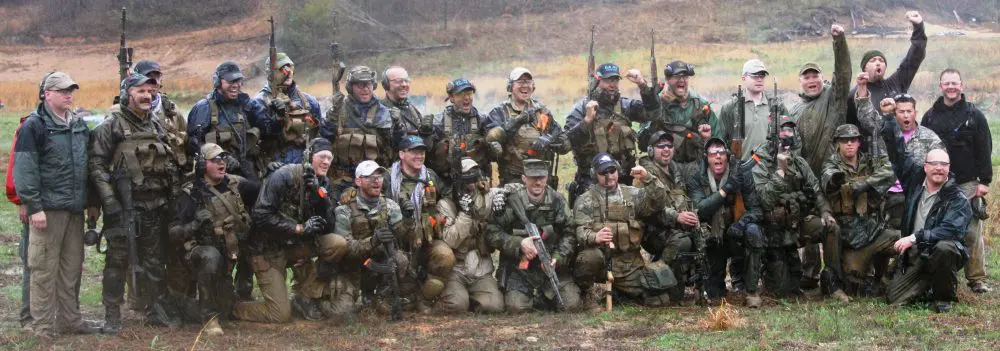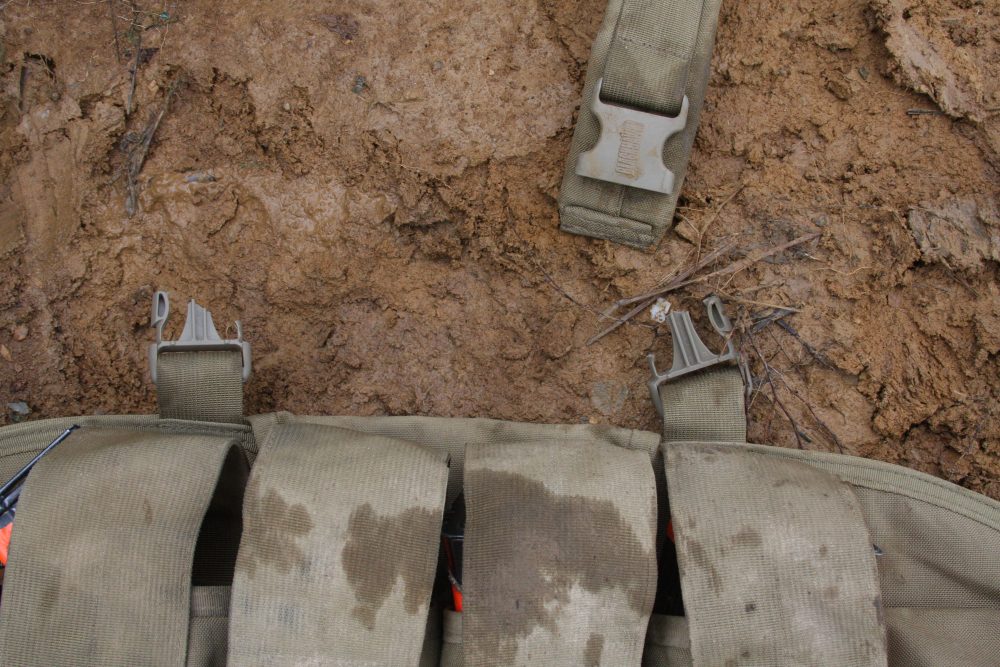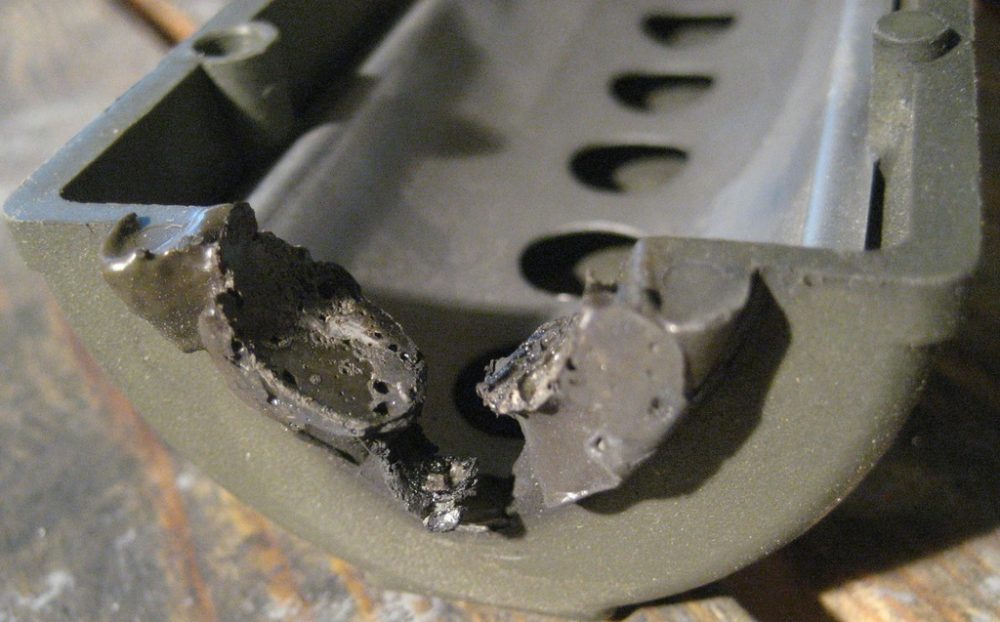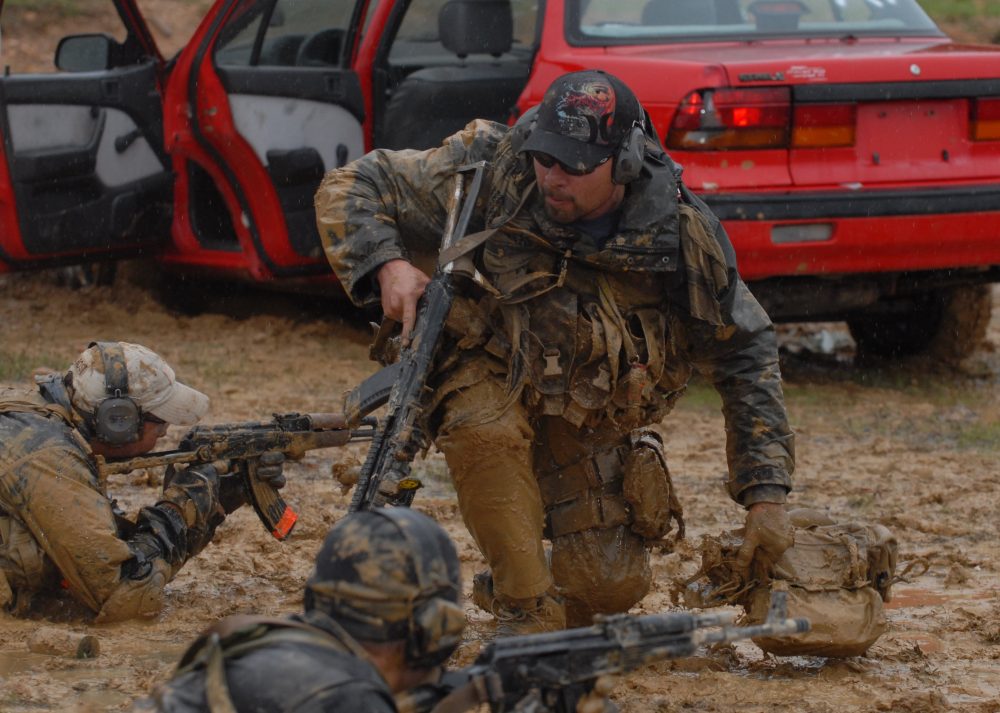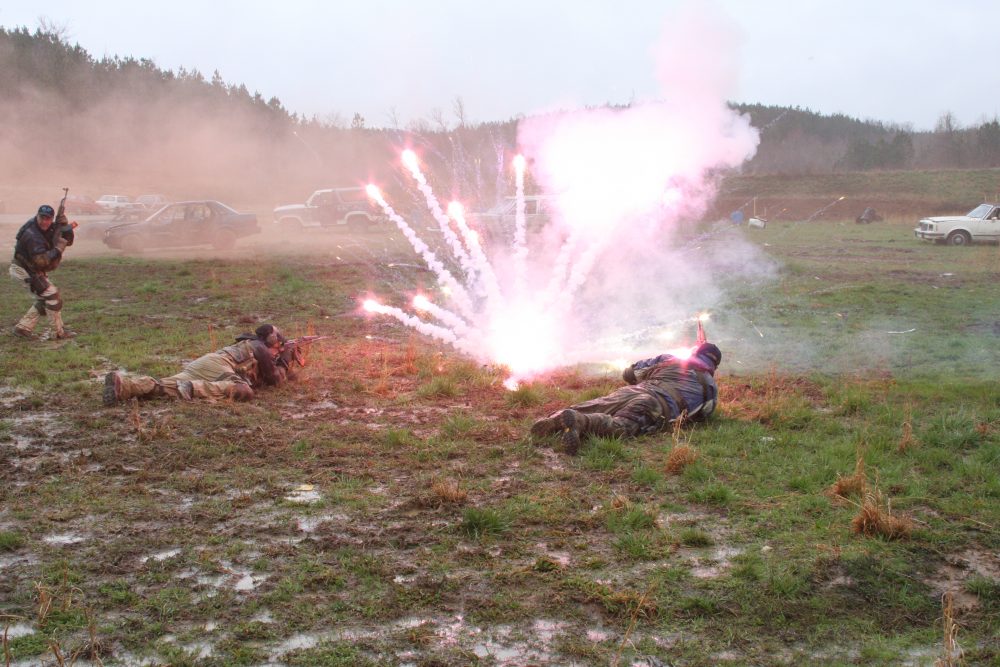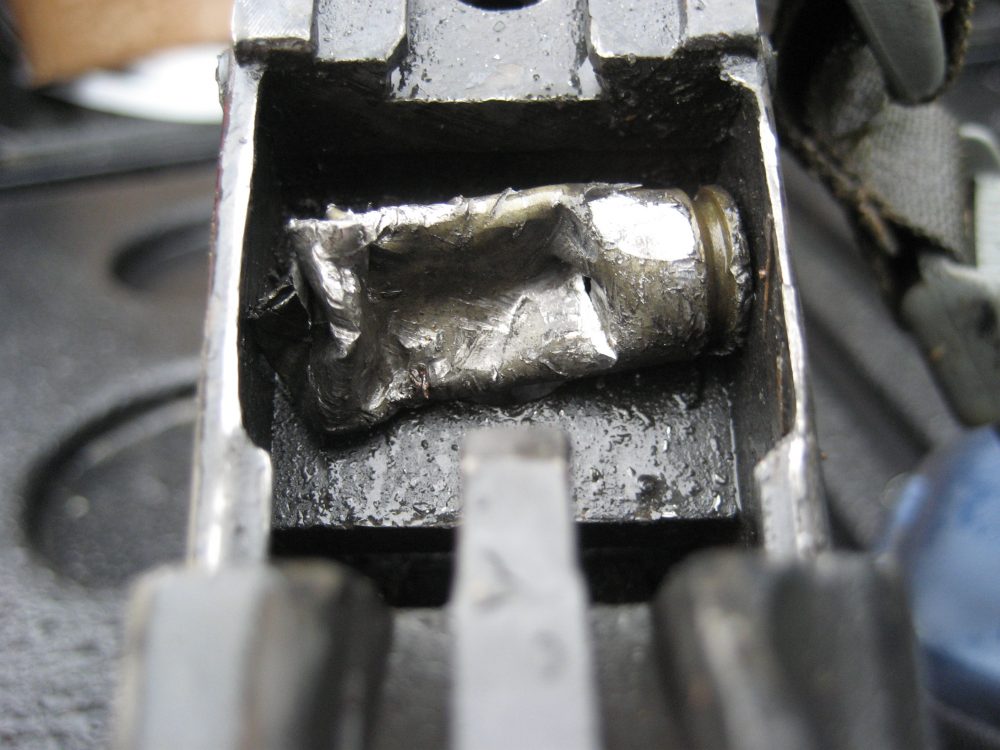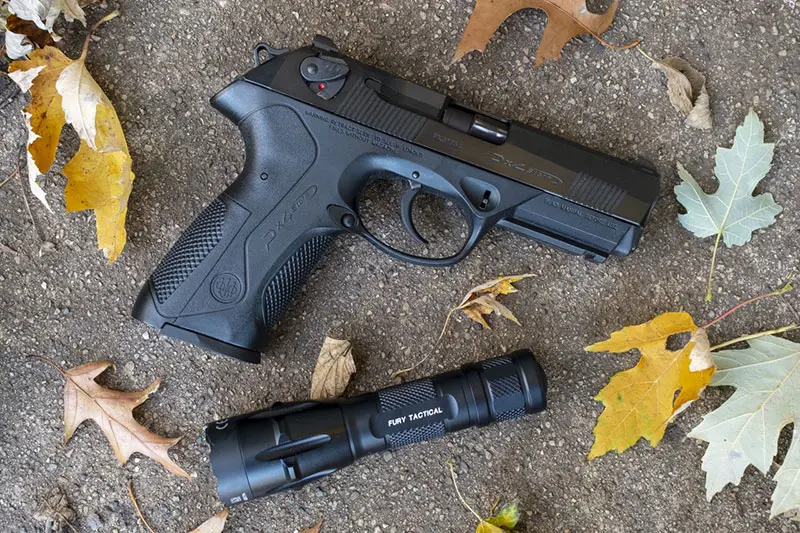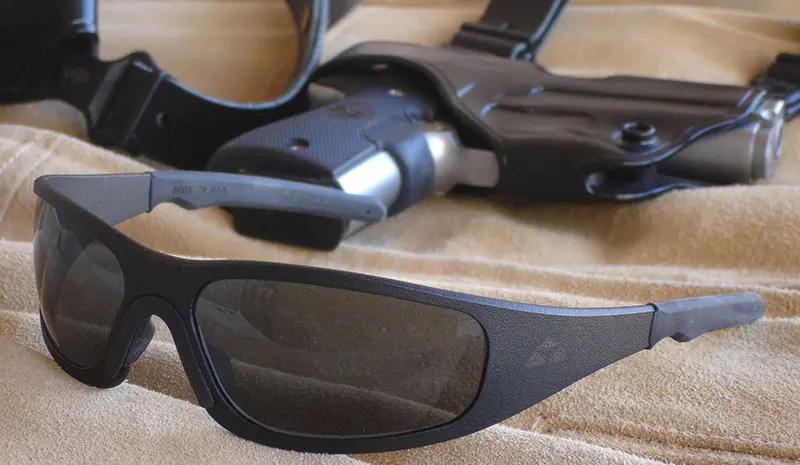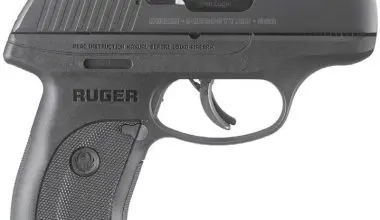Wet and muddy, tired and bloody group photo. They endured many hardships, not least of which was tornado activity during class.
So what happens to a bunch of ARs, AKs and various pistols when you subject them to 12 very intense days and nearly a quarter-million rounds of ammunition? Everything!
In a recent 12-day span here at Tactical Response (TR), we had 22 students attend the following courses: Fighting Rifle, High Risk Civilian Contractor, and High Risk Civilian Contractor Medical course. I decided to document the things that went wrong as we pushed men and machines through 12 very harsh days of training. This was no make-believe “Torture Test”; it was actual sweat and ammunition combined to make “Training Torture.” If these classes aren’t the toughest in the world, they are close.
These particular courses were taught on TR’s home range in Camden, Tennessee in the springtime. As is typical in this near-jungle climate, we had rain for 10 of the 12 days. This of course turned our Tennessee dirt into Tennessee mud, and it was everywhere and in everything. Every student was covered in it from head to toe by the end of each day. It was in the magazines and covered the guns. Since it was in the magazines, it eventually found its way into the guns—that’s when the fun started.
When you use gear as a drag handle, in some cases it will break. The harder you train, the more you break.
Before I get too deeply into this, I want to say that bashing gun and/or gear manufacturers is not the purpose of this article. Certainly some gear is less stellar than others, but everything breaks eventually. Probably less than five percent of the people who buy guns and gear ever get the useful life out of it. TR’s students get their money’s worth and more! More than one manufacturer hates to hear that their customers are attending our classes.
During some High Risk Civilian Contractor drills, which can last up to 30 minutes, guns get so hot that cheap parts melt off them. Stick with American quality milspec parts and accessories.
“My (expletive deleted) rifle is messed up!” a student would bellow when the guns started malfunctioning. I would reply, “Stay in the (another expletive deleted) fight!” and have them work through it. The primary focus was to keep their head in the game when things went bad. There is always something that needs to be done in the tactical arena, and you can be a productive team member regardless of the condition of your rifle. Transitions, a battlefield pick-up of another weapon, taking over communication, dragging the wounded to cover and giving aid, throwing smoke grenades (or the loud ones) are just some of the tasks that can be done. Just because the rifle you’re holding isn’t working doesn’t mean you are down.
“My gun has never done this before,” the students would tell me after a drill. “Really?” I would ask. “Have you ever shot a thousand rounds a day in the pouring rain until the handguards nearly melted off or caught on fire all while doing Counter-Ambush drills in six inches of mud with 21 other guys?” As you can probably guess, they all said no. The guys who had done drills like this before knew what to expect. For everyone else, it was a real eye opener. For some it was the little things, like Velcro doesn’t work when it’s muddy. (That is why a lot of gear has Velcro and buckles.) Many realized that, while open-top mag pouches are faster and sexier, they do not keep debris out of the magazines even if the tops of the mags are facing down. For others it was the bigger things, like neither ARs nor AKs work when full of mud—imagine that!
Some of the drills have the students shooting 10-12 mags or more in a single scenario. As you can imagine, this gets the guns very hot. They would sizzle and steam in the rain and mud. Between the heat and the water, some guns had under-lubrication issues. Even frequent reapplication of oils didn’t help very much. I use and recommend high-temperature wheel-bearing grease (just like for an M-1 Garand) for all of my firearms. It costs about $3.00 a pound. Many guys turn their nose up to it until we start shooting. It is unaffected by the heat and doesn’t run off like oil. I have used the grease from Iraq to Vancouver and all points in between. It works.
Anthony Navarro begins bounding back, covered with mud, with team’s medical bag in tow.
Handguns and rifles, regardless of manufacturer, had issues. The grime managed to work its way into every crevice. Reliability with Glocks was bad; with every other handgun it was worse. There was normal wear and breakage too, and problems were compunded with the abnormal parts breakage. Students would wash the guns out in a spring on the range and keep shooting them until they filled with mud again and then it was back to the spring. Although this cleaning method is very unorthodox, it was effective.
We had issues with AKs that might make you think they are not quite as robust as people would lead you to believe. I know AKs are great rifles, but all machines break. There were plenty of stuck cases as the mud got into the chamber. We had one that rusted shut, a split barrel (mud), handguards that split because of heat and steam, a broken gas tube cover retaining pin, a worn magazine catch, a bi-pod pin that backed out (RPK) and several hammer springs that slipped off. We also had some weird (for an AK) malfunctions like a stuck case between the bolt and top cover and an expended case that got behind the bolt and jammed the action.
Stress also affects weapons handling and reliability. In some warm-up drills prior to final exercise, we give students adrenaline rush with help of simulated attack.
Magazines were the source of many reliability issues. Being full of mud was part of it, of course, but others were getting beaten up quite a bit and the dings and dents in the side walls hampered the functionality. Also, since there are about a gazillion countries that make AKs, there are different variances in manufacturing. This means your Chinese mag might not fit correctly into the Romanian AK that was built on an American receiver. All of the AR-15 magazines had issues with mud, but the MagPul “P-Mags” did the best job overall—by a wide margin—during the 12 days.
We are still perplexed over this AK malfunction. An empty case got behind the bolt. We have no idea how it happened!
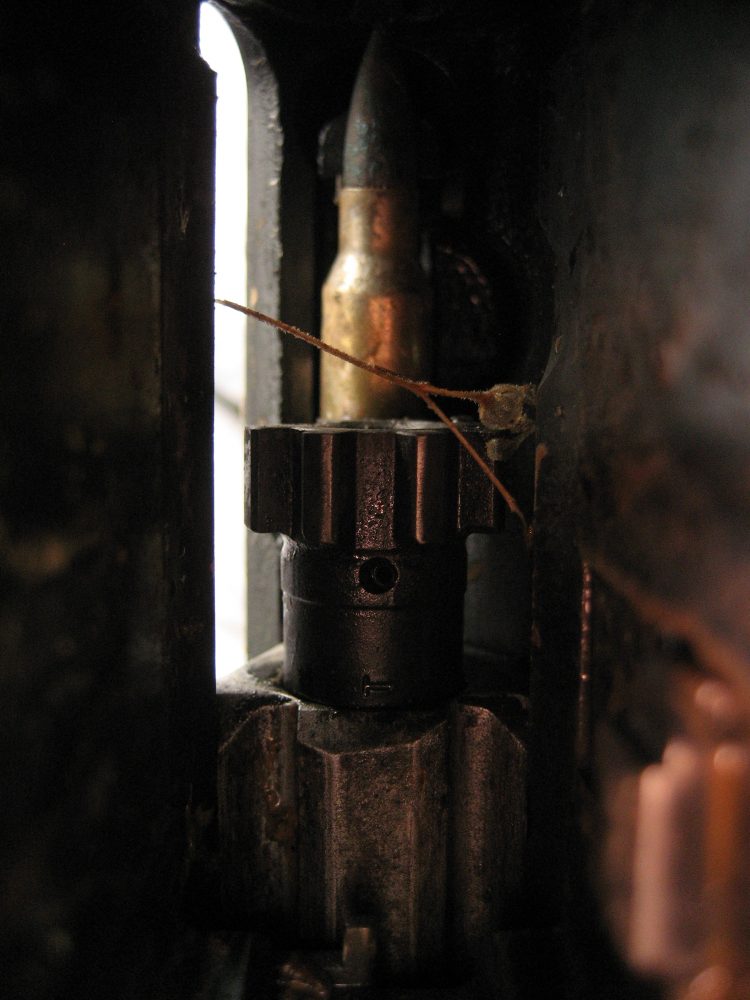
So how do you keep your guns and gear operational through a training class or through combat? I could write a book on this subject, but here are some pointers for you to consider:
- Preventative Maintenance: Don’t just clean your guns when you take them apart. Take a moment to inspect your gun for damage in the form of chips, cracks, broken parts and loose screws. It is better to find it during routine procedures than for it to break during a class, or worse, in combat. Check your entire rifle from front to back, including the stock nut, grip screw, etc., because those things do come loose. Cleaning time isn’t JUST for cleaning. Use it wisely to keep your guns up and running!
- Use Loctite: If your guns or gear have screws or bolts, use Loctite. This applies mostly to rifle accessories, but pistol holsters and magazine pouches and even AKs will also succumb. In a single day, we had an EOTech fall off, a Surefire M-900 fall off, and an AK lose a grip screw. Back-up iron sights are expensive and people lose them in nearly every class because they did not Loctite them.
- Lubrication: People tend to over lubricate their handguns and under lubricate their rifles. You should never put lube in a magazine or in a firing pin channel. You should always lube handguns exactly as the manufacturer recommends. ARs do not need to be “dripping” to run. In fact it could be harmful. No matter what you think, Glocks and AKs need lube.
- Change the recoil springs on your guns. Just because it is still strong enough to get back in battery doesn’t mean it is strong enough to keep the recoil from tearing the lugs off. Change them at the intervals dictated by the manufacturer.
- Accu-wedges, recoil buffers, and plastic or rubber “thingies” have no place in a fighting firearm. I see students with this stuff in their guns all of the time. Those things do not work and, worse yet, they break into pieces at the worst possible moment, jamming all the bits of rubber and plastic in the most terrible places inside your gun’s inner workings and locking it up tight. Slip-on grips are terrible additions and should be removed from your fighting pistol immediately. Add to that list triggers and other components that say “Match” or “Competition.” Those things have no place on any fighting firearm!
- Inspect Your Gear: Thoroughly check every piece of your life-support equipment before every mission. Even if your only mission is concealed carry, check every screw on your Kydex holster and every stitch on your leather; insure that your front sight is in place undamaged and tight. Check your chamber, check your mags, inspect your ammo, and check your cell phone, flashlight, back-up gun and everything else. It is cheap life insurance!
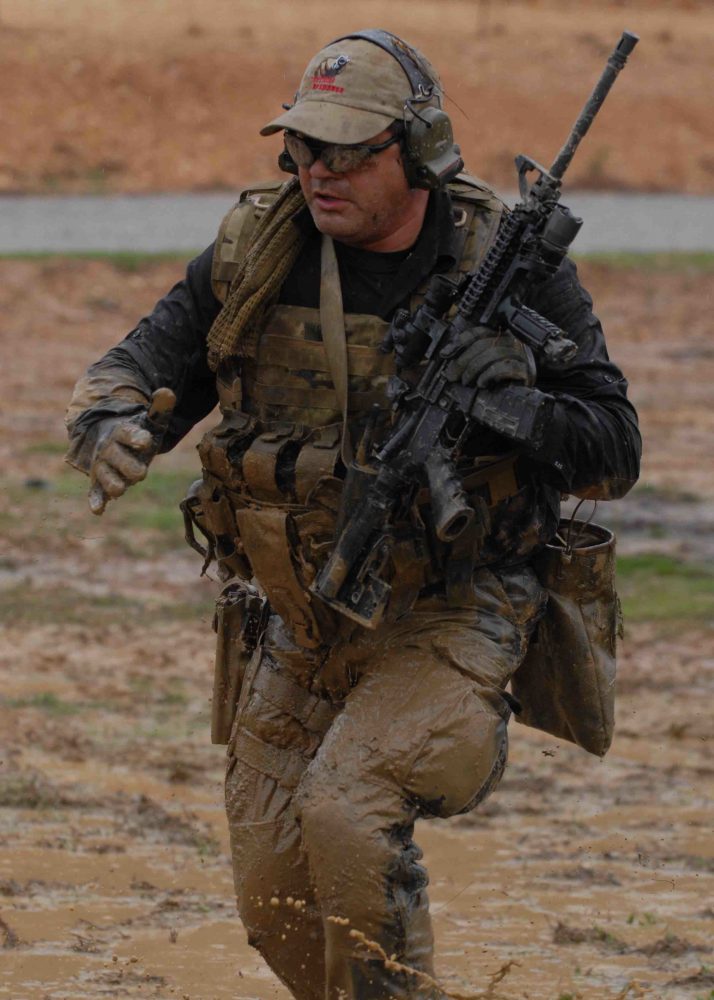
At the end of the 12 days, all of our students got through in spite of some dehydration, a few bloody noses, a twisted knee, a torn muscle, plenty of bruises (body and ego) and probably 100 cases of beer. Watching them transform from a group to a team was an awesome spectacle, and watching their guns and gear fall apart along the way was a sight to behold!
We have finally gotten most of the mud out of the guns and gear and are getting ready for the next High Risk Civilian Contractor classes. I wonder what we’ll break this time?
[James Yeager is a police officer with narcotics and training duties at his department. He is also the lead instructor for Tactical Response. Course information and schedules are available at www.tacticalresponse.com]
